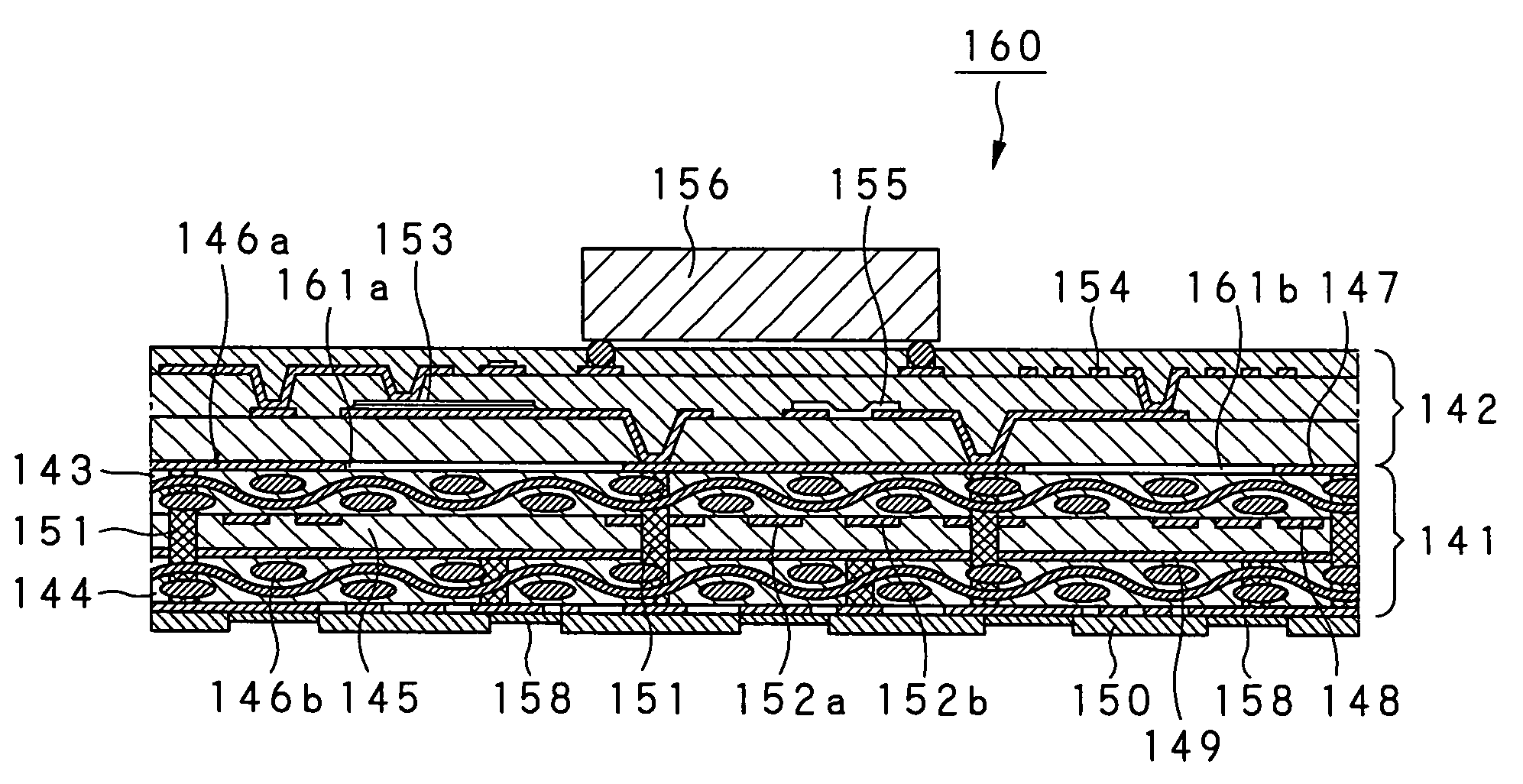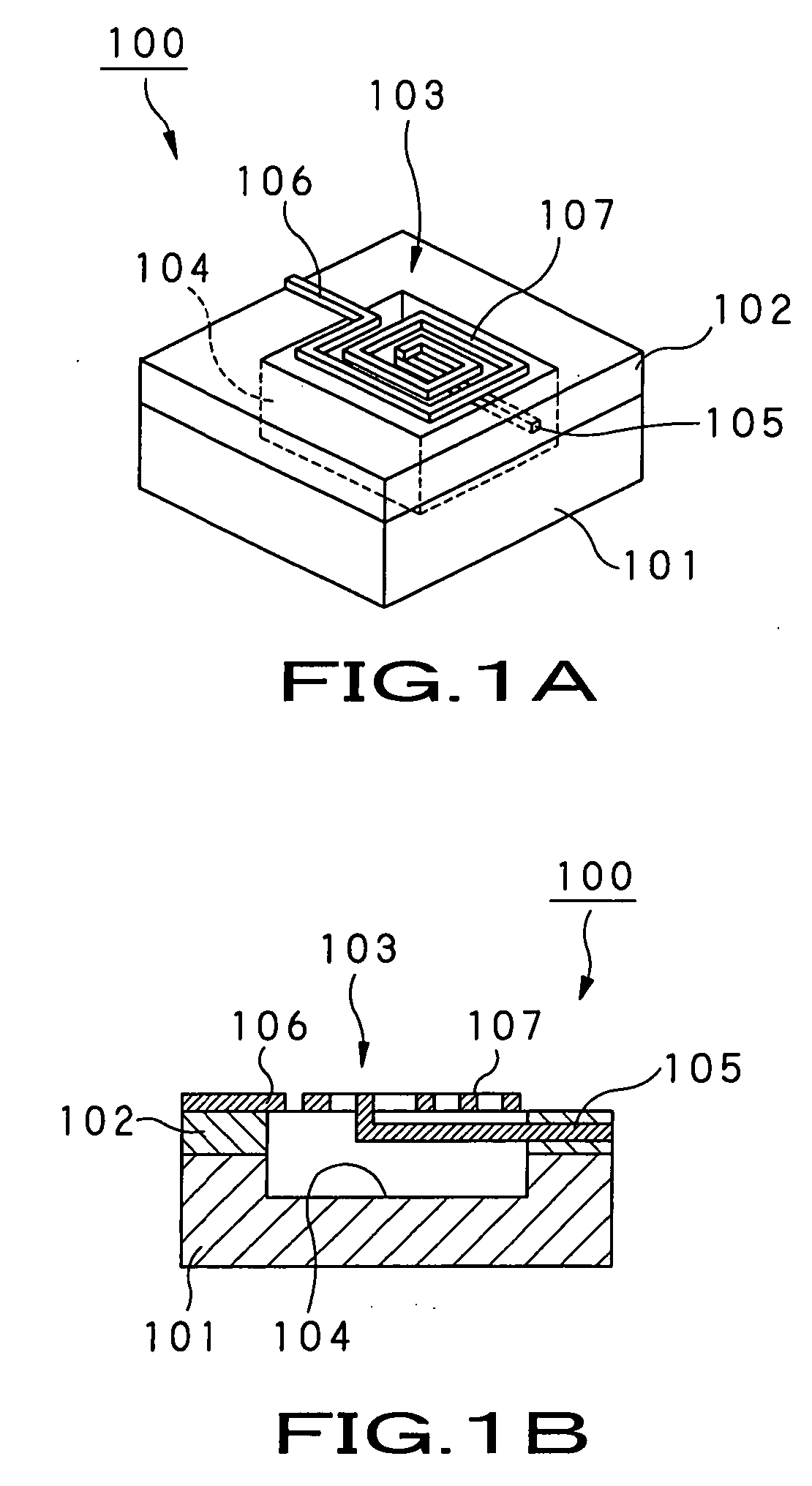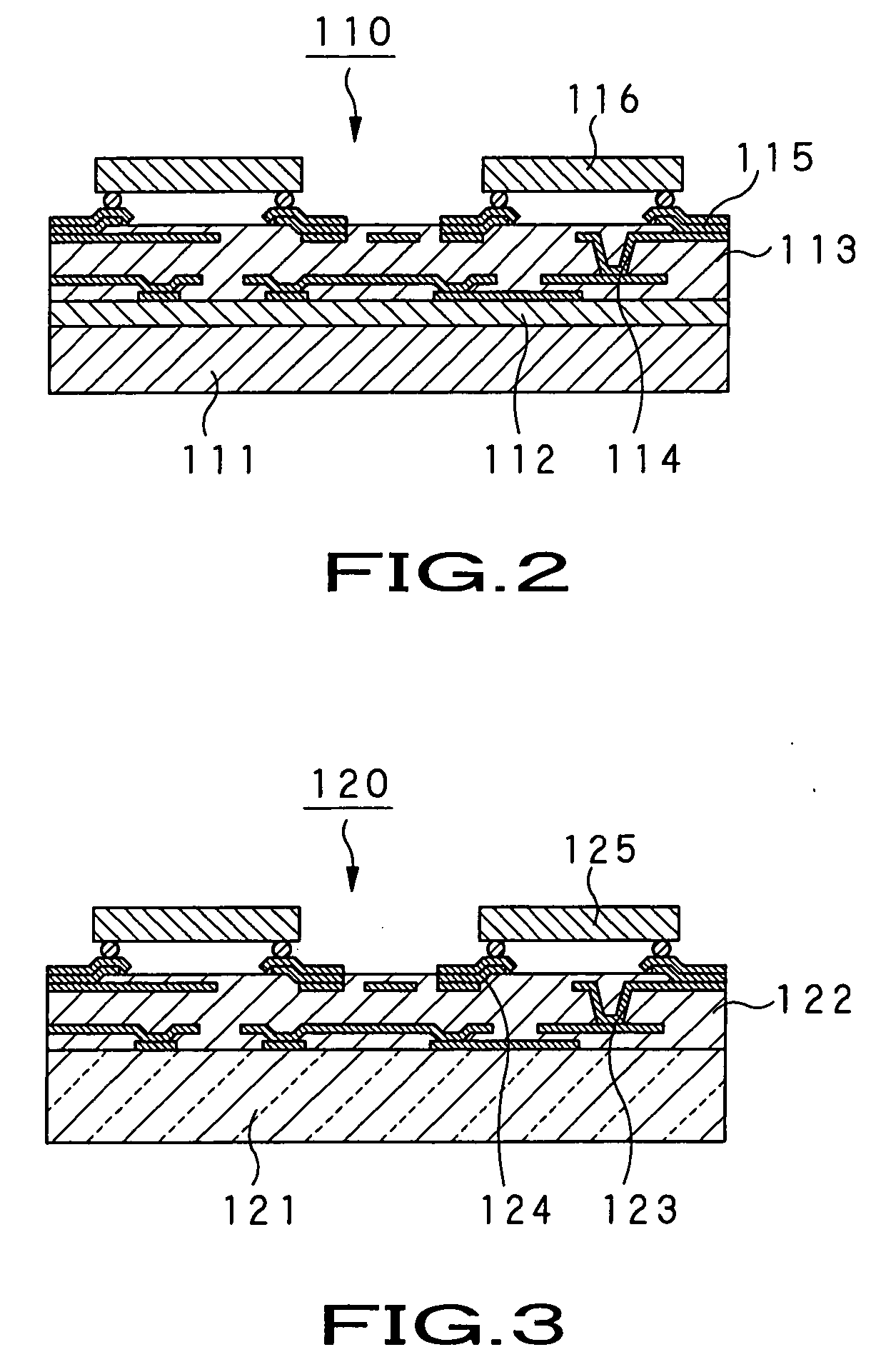High-frequency module and its manufacturing method
a technology of high-frequency modules and manufacturing methods, applied in the direction of high-frequency circuit adaptations, printed circuit non-printed electric components association, waveguide type devices, etc., can solve the problems of difficult to make a sufficient gain, communication terminals cannot be designed compact and lightweight, easy to be done, etc., to improve the performance and reliability of high-frequency modules, improve precision, and reduce costs
- Summary
- Abstract
- Description
- Claims
- Application Information
AI Technical Summary
Benefits of technology
Problems solved by technology
Method used
Image
Examples
second embodiment
[0098] the high-frequency module according to the present invention will be described below with reference to FIG. 18. This high-frequency module is generally indicated with a reference 40. As shown in FIG. 18, the high-frequency module 40 has the base substrate block 2 in which a second organic substrate 41 using a woven glass fabric 42 as a core material is used in place of the aforementioned second organic substrate 12 as the lower layer.
[0099] Note that since the high-frequency module 40 shown in FIG. 18 is constructed of the same or similar components as or to those in the aforementioned high-frequency module 1 except for the second organic substrate 41, the components will be indicated with the same or similar references as or to those for the components in the high-frequency module 1 and will not be described in detail any more.
[0100] In the high-frequency module 40 in FIG. 18, the second organic substrate 41 formed from a both-side copper clad substrate is an integration of...
first embodiment
[0102] The high-frequency module 40 shown in FIG. 18 has electrical properties equal to those of the aforementioned high-frequency module 1 according to the present invention and also is designed to have an improved mechanical strength. The first organic substrate 11 and elements block 3 in the high-frequency module 40 in FIG. 18 can be formed from an organic material such as an acrylate resin, epoxy resin or polyolefin resin which will still remain relatively soft even after having been cured, for example. That is, the material for the first organic substrate 11 and elements block 3 can be selected with a higher freedom.
third embodiment
[0103] the high-frequency module according to the present invention will be described below with reference to FIG. 19. This high-frequency module is generally indicated with a reference 50 in FIG. 19. The high-frequency module 50 is formed by integrating first and second organic substrates 51 and 52 with a prepreg 53 laid between them, and stacking a third organic substrate 54 integrally on the first organic substrate 51 by build-up or one-operation pressing. The high-frequency module 50 uses a both-side copper clad substrate as the first organic substrate 51, having copper foil layers bonded to top and bottom main sides, respectively, thereof and which form first and second wiring layers 55 and 56, respectively, and also a both-side copper clad substrate as the second organic substrate 52, having copper foil layers bonded to top and bottom main sides, respectively, thereof and which form third and fourth wiring layers 57 and 58, respectively. Also, the high-frequency module 50 uses...
PUM
| Property | Measurement | Unit |
|---|---|---|
| Electrical conductor | aaaaa | aaaaa |
| Frequency | aaaaa | aaaaa |
| Inductive effect | aaaaa | aaaaa |
Abstract
Description
Claims
Application Information
 Login to View More
Login to View More - R&D
- Intellectual Property
- Life Sciences
- Materials
- Tech Scout
- Unparalleled Data Quality
- Higher Quality Content
- 60% Fewer Hallucinations
Browse by: Latest US Patents, China's latest patents, Technical Efficacy Thesaurus, Application Domain, Technology Topic, Popular Technical Reports.
© 2025 PatSnap. All rights reserved.Legal|Privacy policy|Modern Slavery Act Transparency Statement|Sitemap|About US| Contact US: help@patsnap.com



